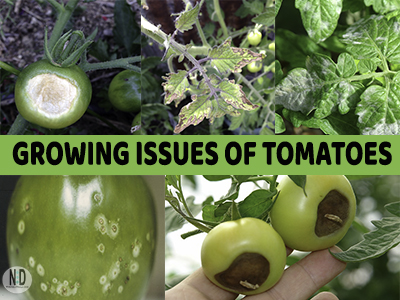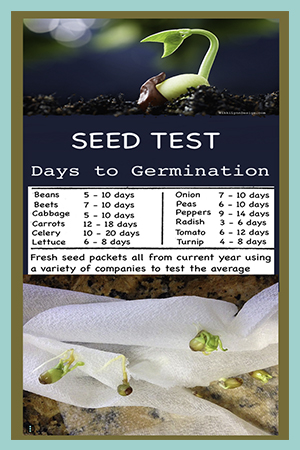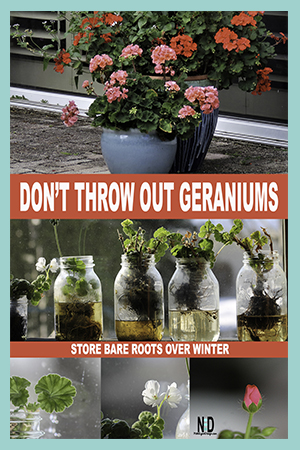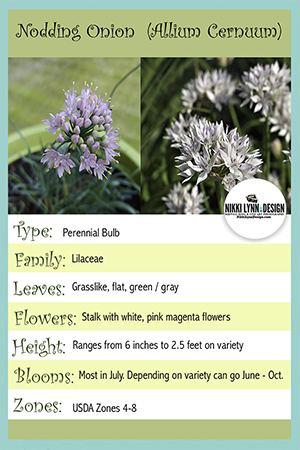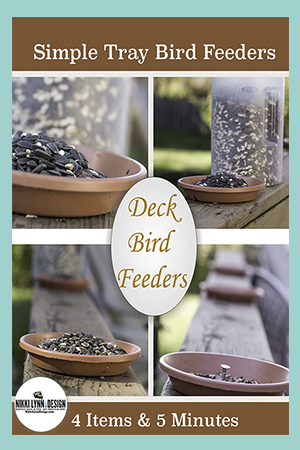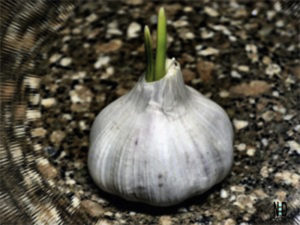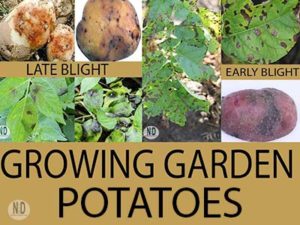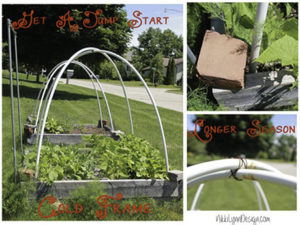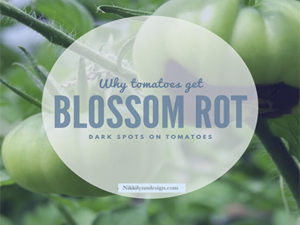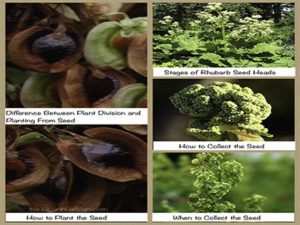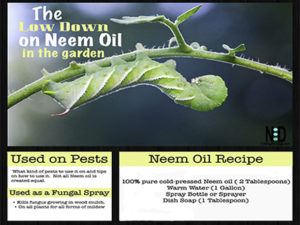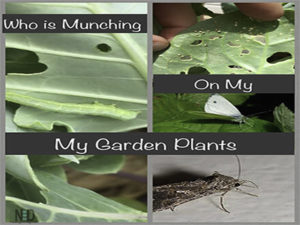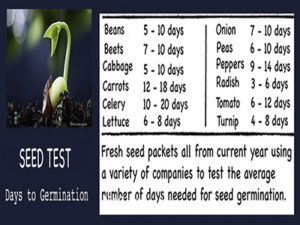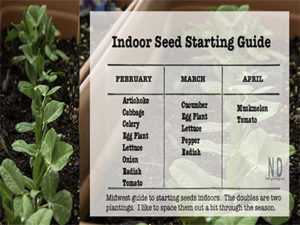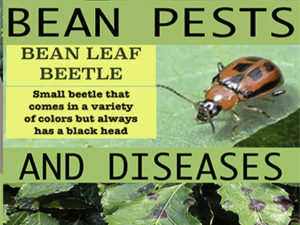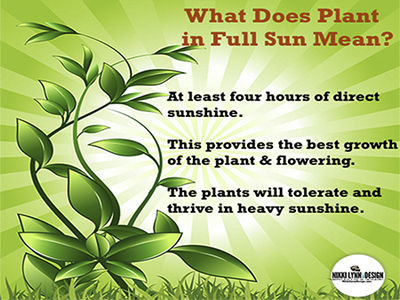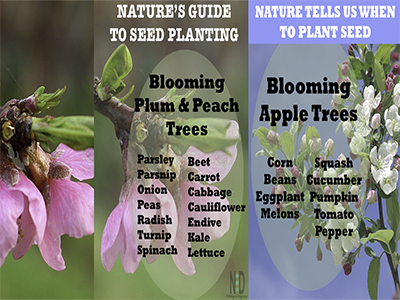If you grow tomato plants each year, you will eventually run into one of the following growing issues with tomatoes. Some you can prevent, others you can not.
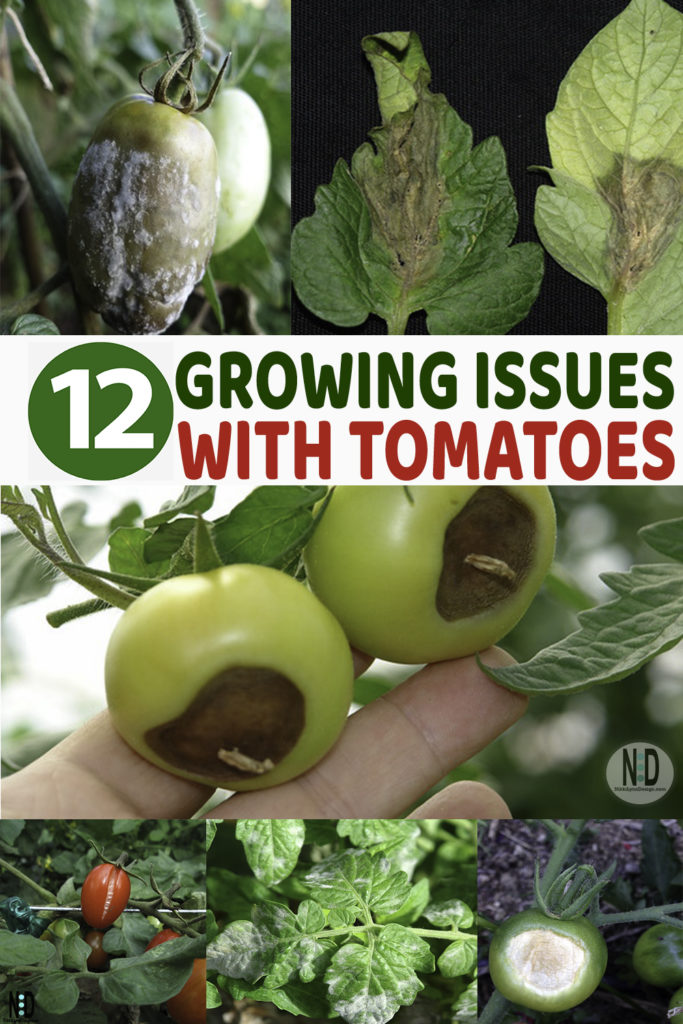
#1 Blossom End Rot of Tomato
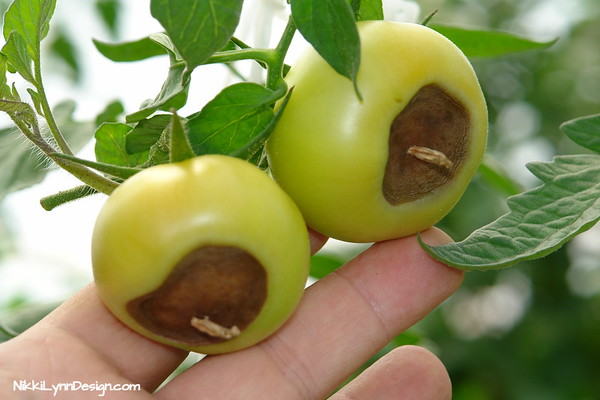
This problem is caused by a lack of calcium in the soil which is triggered by irregular moisture supplied to the soil during the growing season.
The soil can also have a high salt content or poor drainage. Place two inches of mulch under the plant to be sure to create even soil moisture.
Additional Posts:
Tomato Watering Tips
Tomatoes Have Dark Spots On Bottom
The best way to prevent this from happening is to keep a regular schedule when watering your tomato plants.
#2 Bacterial Canker of Tomato
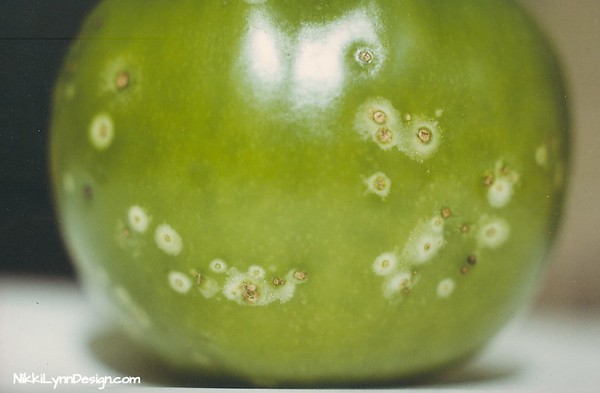
Bacterial canker of tomato – Pathogen: Clavibacter michiganensis subsp. michiganensis.
Purchase certified pathogen-free seed from a reputable supplier. If purchasing plants, chose healthy transplants from a reputable grower.
Pull plants. Soak all garden tools in contact with the plants and soil in 1 part bleach to 9 parts water for 1 to 5 minutes. Throw away or disinfect all stakes, supports, or garden gloves that came into contact with the plant.
Wait 2 years to plant in that soil plot.
#3 Potassium Deficiency
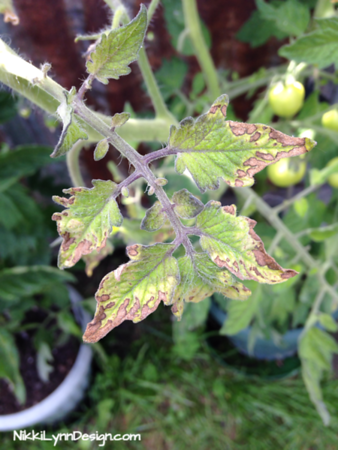
Tomato: Potassium deficiency
Symptom: Scorched, necrotic leaf margins.
To fix potassium deficiency burying banana peels an inch below the soil’s surface.
Want to achieve healthy growing soil?
This article’s elements to good soil can give you a basic overview.
#4 Late Blight of Tomato Plant Stem
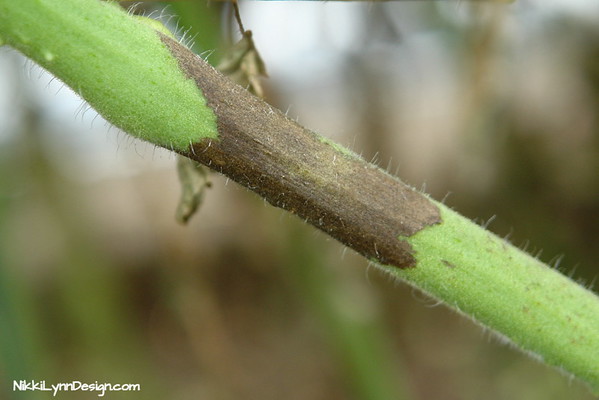
Pictured is the late blight disease that has a few days growth on a tomato plant stem. Late blight it a microscopic fungus-like microorganism. Late blight (Phytophthora infestansoccurs)
I find it to be conveniently named so, because it is found later in the growing season, normally after the plant has blossomed.
Purchase liquid copper spray. It will take care of blight and many additional issues in your garden.
#5 Late Blight Disease Passed From Stem to Leaves
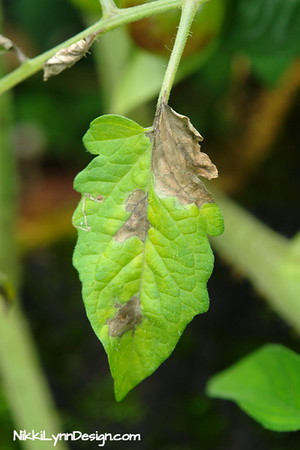
Late blight disease that has passed from the stem of a tomato plant to the leaves. Late blight it a microscopic fungus-like microorganism. Late blight (Phytophthora infestansoccurs)
I find it to be conveniently named so, because it is found later in the growing season, normally after the plant has blossomed.
Purchase liquid copper spray. It will take care of blight and many additional issues in your garden.
For everything you ever wanted to know about late blight in plants, this is an excellent resource.
#6 Late Blight of Tomato Plant Fruit
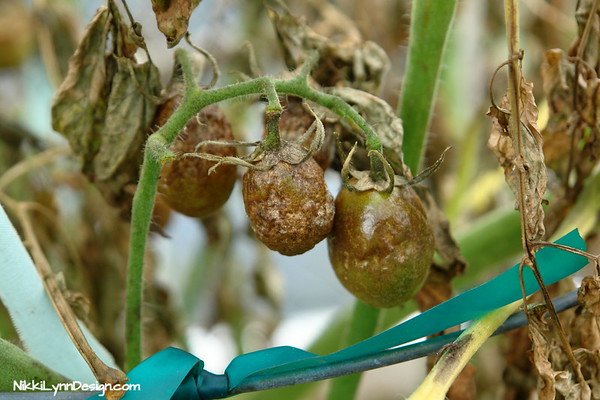
Late blight (Phytophthora infestansoccurs)
Pictured is the late blight disease that has affected the fruit of the tomato plant. Late blight it a microscopic fungus-like microorganism.
I find to be conveniently named so, because it is found later in the growing season, normally after the plant has blossomed.
Purchase liquid copper spray. It will take care of blight and many additional issues in your garden.
#7 Postharvest Rot
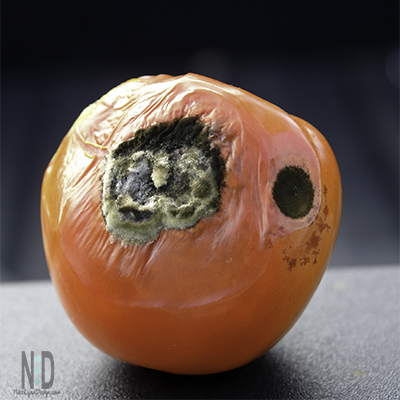
Postharvest rot of tomato flesh. This happens when you have an injury to your fruit and bacteria find their way inside.
Be sure when picking, washing, and storing your fruit that you are handling it carefully. If you see any cuts or bruises, use that fruit immediately and do not store it with additional vegetables.
#8 Gray Mold On Leaves
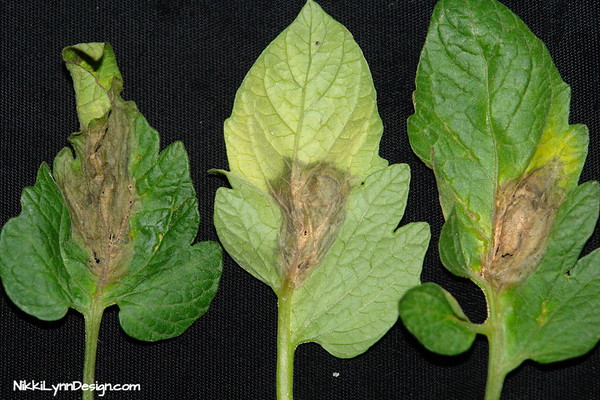
Gray mold of tomato (Lycopersicon esculentum) leaves caused by Botrytis cinerea.
There are no cures to gray mold once it is found. The best thing you can do is pull and destroy the affected plants and fruit.
#9 Tobacco Etch Virus
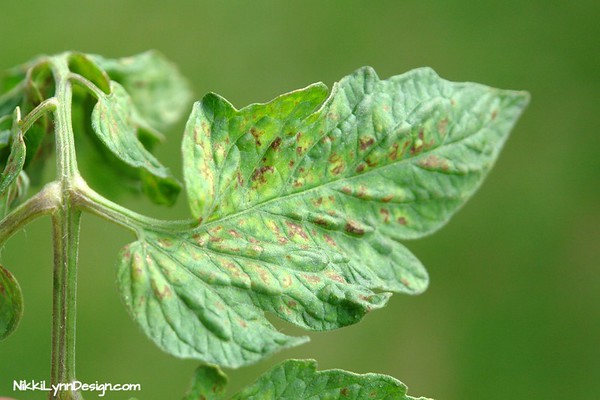
Tobacco etch virus on tomato – Symptom: necrotic leaf spots.
The virus affects tomato and pepper plants and is spread through aphids, infected weeds, and gardening tools.
Use a homemade spray of 1 cup of vegetable oil with a quarter cup of dish soap. Place one tablespoon of the concentrate with four cups of water into a sprayer. Spray to the undersides of the plant leaf undersides for aphids.
#10 Powdery Mildew
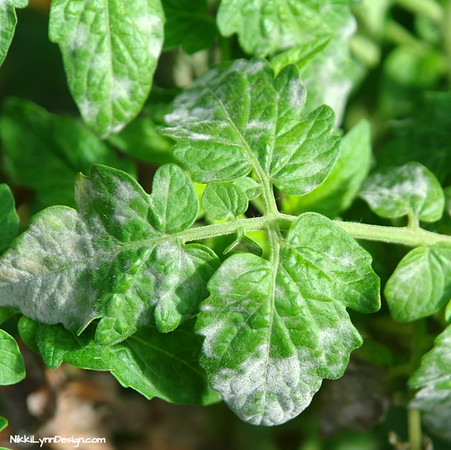
Tomato powdery mildew – Tomato powdery mildew may be caused by three pathogens worldwide.
Cut off all infected parts of the plant and treat with sulfur-containing organic fungicides as preventive and treatment for existing infections.
Additional Post: Tomato Pests
#11 Sun Scald
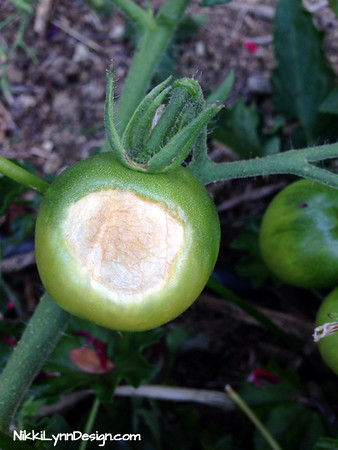
Sun scald of tomato (Solanum lycopersicon). When the sun’s heat is too hot on tomatoes.
Keep fruit shaded during the hottest portions of the day. Mulch around the plants to keep a cooler root temperature.
Additional Post: Tomato Paste Recipe
#12 Fruit Cracks
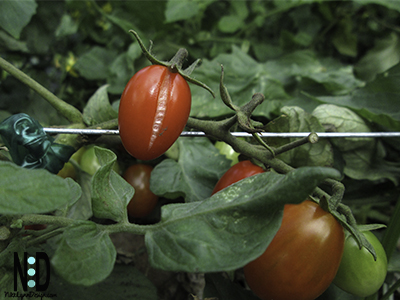
Tomato fruit cracks can develop due to uneven watering or drastic changes in humidity and/or barometric pressure.
Water your plants daily during the morning hours. Do not water during the warmest part of the day, the cold water and hot fruit will cause cracking.
As you can see there are a variety of growing issues with tomatoes. Some are easily fixed by knowledge and prevention. Others, may give you a few years headache by not allowing you to plant in the soil.
